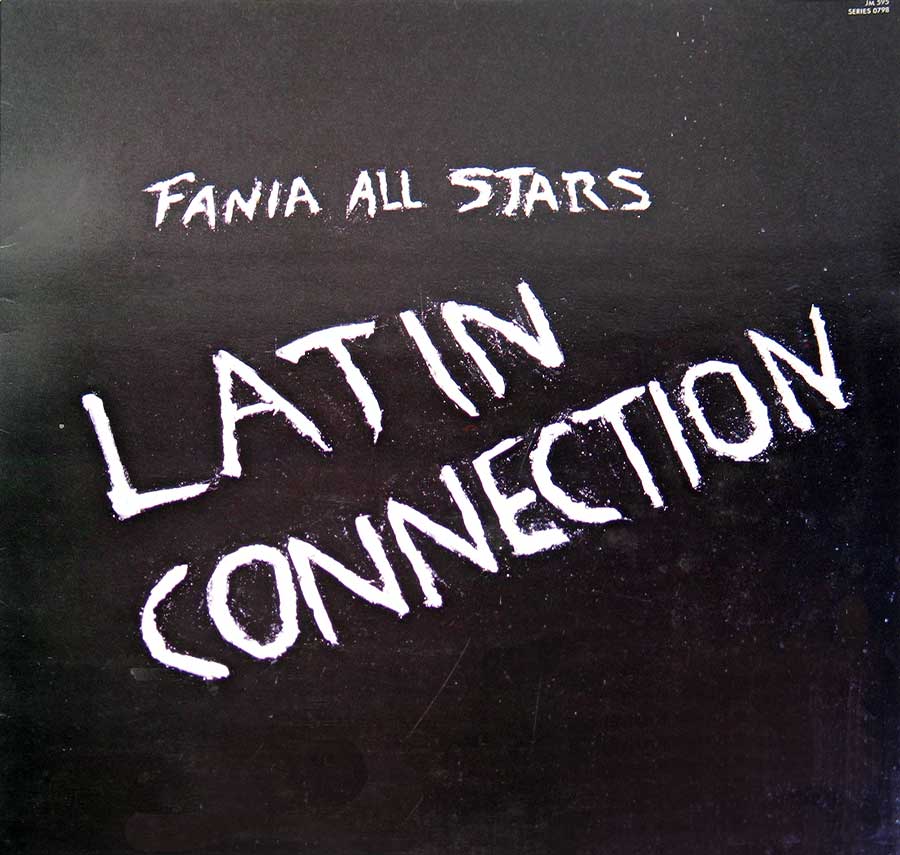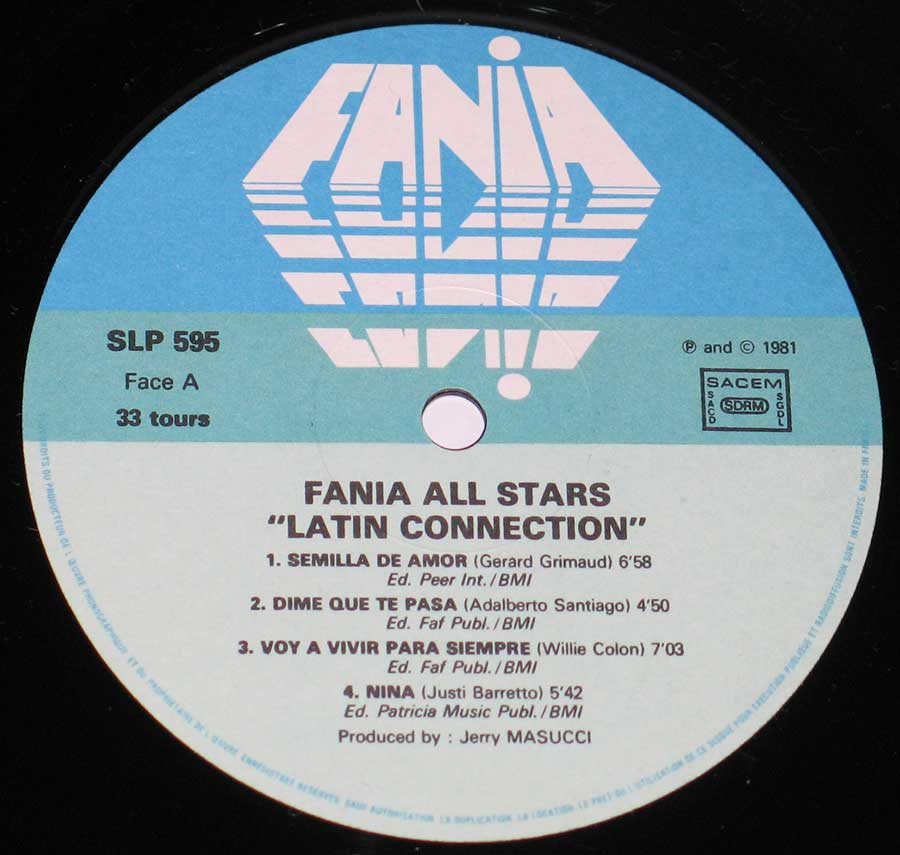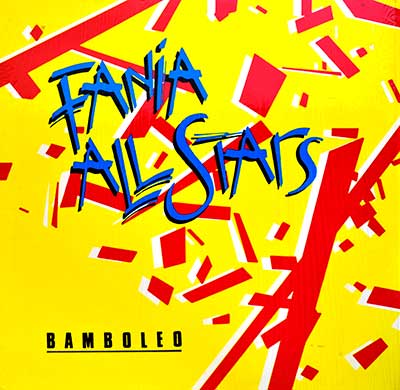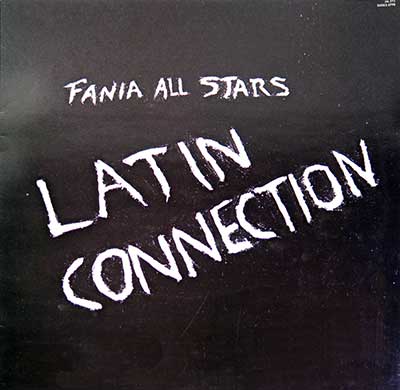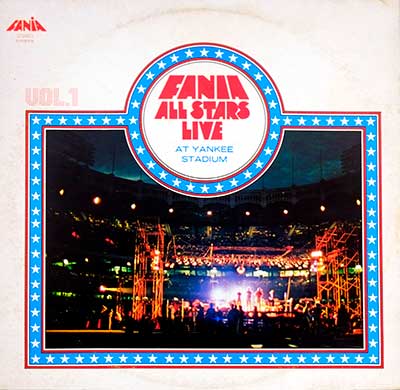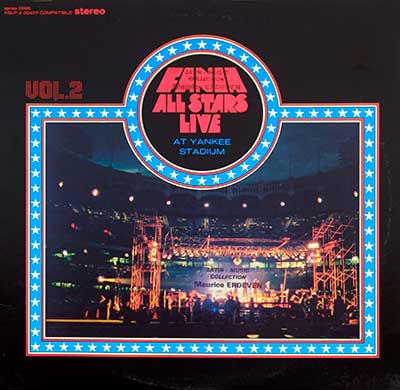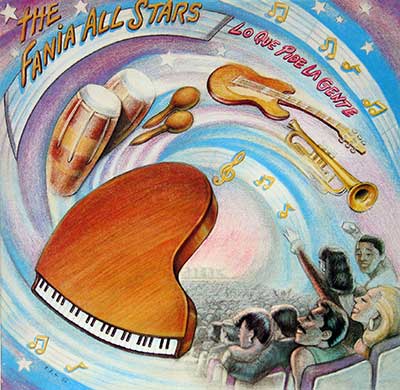ÒLatin ConnectionÓ (1981): The All-Stars tighten the groove Album Description:
By 1981, the Fania All Stars had already played salsa on the grandest possible stages Ñ from the Cheetah in Manhattan to Yankee Stadium and even Kinshasa Ñ and flirted with crossover fashions along the way. Latin Connection lands like a course correction: a big-band salsa LP with plush strings and a front line of elite soneros, produced by label co-founder Jerry Masucci. The feel is orchestral but callejero, precise yet combustible.
Setting the scene: from club heat to stadium espect‡culo
The groupÕs legend was forged onstage. The 1971 Cheetah concert became the documentary Our Latin Thing, a time capsule of Nuyorican life and the bandÕs breakneck descarga spirit. Two summers later, their Yankee Stadium blowout drew tens of thousands; a conga duel sparked a field-storming commotion that halted the show and forced emergency turf repairs Ñ the kind of triumph-and-chaos chapter that follows any scene that suddenly goes mainstream. In 1974 they flew to Zaire for the Ali-Foreman ÒRumble in the JungleÓ festivities, appearing in Leon GastÕs later film Soul Power.
What the album sounds like
Latin Connection opens with ÒSemilla de Amor,Ó a semi-classical prelude snapping into full salsa thrust, led by HŽctor Lavoe and a gleaming trumpet break from Juancito Torres. ÒDime QuŽ Te Pasa,Ó fronted by Adalberto Santiago, leans into a bomba/plena sway. ÒVoy a Vivir Para SiempreÓ pairs Willie Col—nÕs voice with Johnny PachecoÕs bright flute lines; ÒNi–a,Ó a Joe Cuba chestnut, puts Cheo Feliciano in velvet form over Louie Ram’rezÕs vibraphone sparkle.
Side Two keeps the panorama wide. Ismael Rivera tears into ÒBilongo,Ó with spotlit cameos for bongosero Roberto Roena and trumpeter Luis ÒPericoÓ Ortiz. Celia Cruz lights ÒMi So Den BosoÓ like a big-band merengue street parade; Ismael Miranda centers ÒEl CaminanteÓ; Santos Col—n croons ÒLa Monta–aÓ; and Pete ÒEl CondeÓ Rodr’guez closes with ÒRosa en el Fango,Ó pricked by Yomo ToroÕs cuatro. The arrangements are clean, the coro/brass punches exact, the strings a satin overlay rather than a blanket.
Stories in the voices
Celia Cruz, already the exiled queen who turned diaspora into voltage, had joined the All-Stars in the 1970s and carried that global roar Ñ including a show-stopping moment in Kinshasa Ñ into these sessions. Her presence here is not window dressing; itÕs pura energ’a.
HŽctor Lavoe arrives with the paradox he embodied: ironclad swing and conversational phrasing shadowed by personal turbulencias. On ÒSemilla de AmorÓ heÕs pure command Ñ the kind of off-the-beat phrasing that made dancers snap to attention Ñ even as his era with the All-Stars was marked by public struggles.
Willie Col—n, architect of trombone-forward salsa dura and one of FaniaÕs boldest tacticians, had spent the late Õ70s testing pop corridors. Here, back in the engine room, his vocal cameo and the bandÕs brisk charts feel like a re-centering rather than retreat.
And listen for Papo Lucca Ñ the Sonora Ponce–a maestro Ñ whose piano turns (notably on ÒLa Monta–aÓ) splice dance-floor drive with conservatory touch, and for the crack tandem of Roena (bongos), Eddie Montalvo (congas), Sal Cuevas (electric bass), and Juancito Torres/Luis ÒPericoÓ Ortiz (trumpets), a rhythm-and-brass engine that makes the string sheen feel earned.
Fault lines and flashpoints around the band
FaniaÕs quest for the wider mercado had sent the All-Stars into Columbia Records collaborations and disco-tilted tracks like Spanish Fever, moves that drew side-eye from purists even as they expanded the bandÕs footprint. Latin Connection follows the recalibration signaled by 1980Õs Commitment, restoring salsa dura as the backbone while keeping orchestral color in the frame.
Offstage, the organization weathered frictions familiar to any fast-growing music empire: storms like the halted Yankee Stadium show in 1973 and, later, royalty disputes that surfaced as the 1980s wore on. Those tensiones donÕt cloud the music here; if anything, they underline how tight the band sounds when the red light goes on.
The connection in ÒLatin ConnectionÓ
What ties the LP together is breadth without drift. Across nine tunes and roughly fifty-plus minutes, you move from bolero tenderness to Cuban standards, Puerto Rican bomba/plena currents, merengue lift, and New York brass swagger Ñ all voiced by the eraÕs A-list soneros. ItÕs less a sampler than a statement: the All-Stars, after the stadium years and the crossover detours, still knew how to make a ballroom feel like a barrio block.
